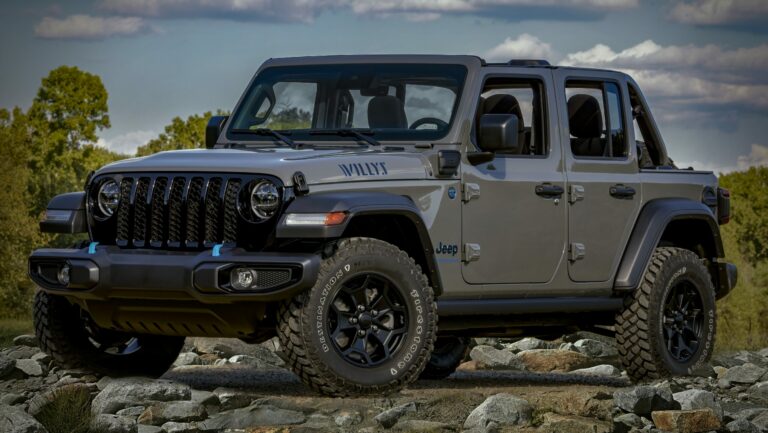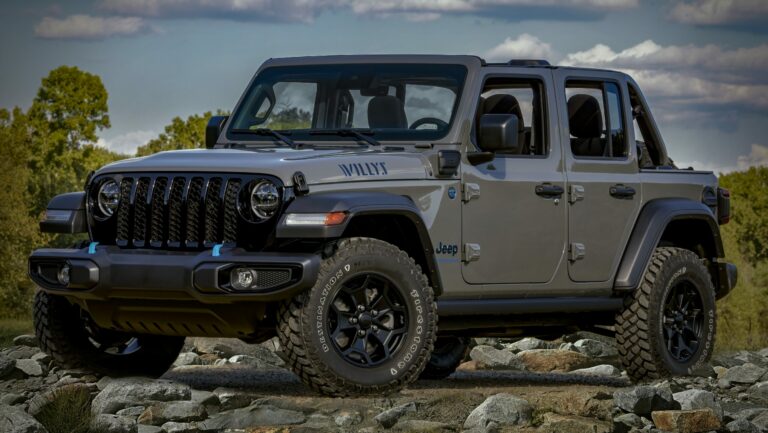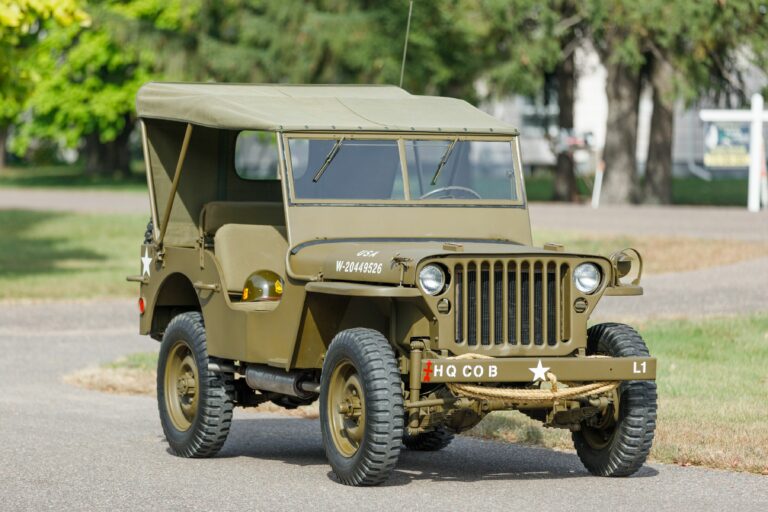99 Jeep Grand Cherokee 6 Cyl Engine For Sale: A Comprehensive Buyer’s Guide
99 Jeep Grand Cherokee 6 Cyl Engine For Sale: A Comprehensive Buyer’s Guide jeeps.truckstrend.com
The 1999 Jeep Grand Cherokee, particularly the WJ generation, holds a special place in the hearts of many automotive enthusiasts. Renowned for its blend of off-road capability, on-road comfort, and rugged reliability, the ’99 Grand Cherokee quickly became a beloved SUV. Central to its enduring appeal, especially for those seeking longevity and a strong power delivery, is the venerable 4.0-liter inline 6-cylinder (I6) engine. If you own one of these iconic vehicles and are facing engine troubles, or perhaps you’re embarking on a restoration project, the search for a "99 Jeep Grand Cherokee 6 Cyl Engine For Sale" is a journey many undertake.
This article serves as your definitive guide to understanding, sourcing, and purchasing a replacement 4.0L I6 engine for your 1999 Jeep Grand Cherokee. We’ll delve into why these engines are still in demand, where to find them, what to look for, and crucial considerations to ensure a successful purchase and installation.
99 Jeep Grand Cherokee 6 Cyl Engine For Sale: A Comprehensive Buyer’s Guide
The Enduring Appeal of the 4.0L I6 in the 1999 Grand Cherokee
The 4.0L inline-six engine, often referred to as the "bulletproof" engine by Jeep enthusiasts, is a testament to robust engineering. First introduced in the 1987 Jeep Cherokee (XJ), it carried over into the Grand Cherokee lineup, including the 1999 WJ model. This engine is celebrated for several key attributes:
- Reliability and Durability: Its cast-iron block and relatively simple design contribute to its legendary longevity. Many 4.0L engines are known to surpass 200,000 or even 300,000 miles with proper maintenance.
- Torquey Performance: While not a horsepower king, the 4.0L I6 delivers ample low-end torque, making it excellent for off-roading, towing, and general daily driving. In the 1999 Grand Cherokee, it produced around 190 horsepower and 225 lb-ft of torque.
- Ease of Maintenance: Its straightforward design means many repairs and maintenance tasks can be performed by a competent DIY mechanic, and parts are widely available and relatively inexpensive.
- Proven Track Record: Decades of production mean extensive knowledge, aftermarket support, and a large community of owners and mechanics familiar with its quirks and strengths.

For these reasons, when a 1999 Grand Cherokee’s original 4.0L engine finally gives out, replacing it with another 4.0L is often the most logical and cost-effective solution, allowing owners to extend the life of a vehicle they love.
Why Buy a Replacement 6-Cyl Engine for Your 1999 Grand Cherokee?
There are several common scenarios that lead owners to seek a replacement engine:
- Catastrophic Failure: This includes severe issues like a thrown rod, a cracked block, hydro-locked engine, or a seized crankshaft, making repair impractical or impossible.
- Excessive Wear and Tear: After hundreds of thousands of miles, even the toughest engines can suffer from excessive oil consumption, low compression, persistent knocking, or severe leaks that are too costly to repair individually.
- Accident Damage: A front-end collision might damage the engine block or critical components beyond repair.
- Cost-Effectiveness: For many, the cost of replacing an engine is significantly less than purchasing a new or newer used vehicle, especially when the rest of the Grand Cherokee (body, transmission, interior) is still in good condition.
- Project Vehicle: Some enthusiasts purchase these engines for custom builds, swaps into other Jeep models, or for a complete restoration of their WJ.
Types of 99 Jeep Grand Cherokee 6-Cyl Engines Available
When searching for a "99 Jeep Grand Cherokee 6 Cyl Engine For Sale," you’ll primarily encounter three main types, each with its own set of pros and cons:
-
Used Engines (Salvage/Junkyard):
- Description: These are engines pulled from wrecked or decommissioned vehicles. They typically come with the lowest price tag.
- Pros: Most affordable option. Readily available from salvage yards.
- Cons: Unknown history (mileage, maintenance, previous issues). No warranty or a very limited, short-term warranty (e.g., 30-90 days). Condition can vary wildly; it’s a gamble.
- Tips for Buying: Always ask for the vehicle’s VIN it came from. Request a compression test video or results. Visually inspect for obvious damage, leaks, or signs of neglect (sludged oil).
-
Remanufactured Engines:
- Description: These engines have been completely disassembled, inspected, cleaned, and had all wear components (bearings, piston rings, seals, gaskets) replaced with new parts. Critical components like crankshafts, camshafts, and cylinder heads are machined or replaced to meet original factory specifications. They are tested to ensure performance.
- Pros: Come with a substantial warranty (often 1-3 years, unlimited mileage). Known quality control and testing. Typically offer the best balance of price and reliability.
- Cons: More expensive than used engines. May not include all external accessories (e.g., alternator, starter, intake manifold) unless specified.
- Tips for Buying: Purchase from reputable remanufacturers (e.g., Jasper Engines, ATK, etc.). Understand what components are included ("long block" vs. "complete engine"). Clarify warranty terms.
-
Rebuilt Engines:
- Description: Similar to remanufactured, but often done by smaller, local machine shops or independent mechanics. The extent of the rebuild can vary significantly.
- Pros: Can be more affordable than factory remanufactured units. You might be able to communicate directly with the rebuilder.
- Cons: Quality control can be inconsistent depending on the rebuilder’s expertise and standards. Warranty terms may vary greatly or be less comprehensive.
- Tips for Buying: Get references for the rebuilder. Ask for details on what components were replaced/machined. Inquire about their testing procedures and warranty.
Where to Find a 99 Jeep Grand Cherokee 6-Cyl Engine For Sale
Locating a suitable replacement engine requires a multi-pronged approach:
- Online Marketplaces:
- eBay: A vast selection of used, rebuilt, and remanufactured engines from various sellers across the country. Use specific search terms like "1999 Jeep Grand Cherokee 4.0L engine" or "WJ 4.0L I6 engine."
- Craigslist/Facebook Marketplace: Good for finding local private sellers or smaller shops. Be prepared to travel and inspect in person.
- Specialized Forums: Jeep forums (e.g., JeepForum.com, NAXJA) often have classified sections where members sell parts.
- Used Auto Parts Dealers/Salvage Yards:
- Local Junkyards: Visiting in person allows for direct inspection.
- National Networks (e.g., LKQ, Car-Part.com): These large companies have extensive inventories and often offer limited warranties on used parts. Car-Part.com is a great resource to search multiple yards simultaneously.
- Engine Remanufacturers:
- Direct from Companies: Many reputable remanufacturers (Jasper, ATK, Fraser, etc.) sell directly to consumers or through authorized distributors.
- Local Mechanics/Jeep Specialists: Your local garage or a shop specializing in Jeeps may have connections to suppliers or even engines in stock. They can also offer installation services.
Key Considerations Before Purchasing
Before you hand over your hard-earned cash, thorough due diligence is essential:
- Compatibility: Ensure the engine is specifically for the 1999 Grand Cherokee (WJ). While the 4.0L I6 is largely the same across various Jeep models, minor differences in accessory mounts, sensors, or exhaust manifolds can exist between model years (e.g., between an XJ Cherokee and a WJ Grand Cherokee). Confirm the engine code (often found on a sticker or cast into the block).
- Mileage and Condition (for Used Engines):
- Ask for the exact mileage.
- Inquire about any known issues.
- Request a video of the engine running before removal, or a compression test.
- Check for signs of external damage, cracks, or excessive oil leaks.
- Remove the oil filler cap and check for sludge.
- Warranty: This is paramount, especially for remanufactured or rebuilt units. Understand:
- Length of warranty (e.g., 12 months, 24 months, unlimited mileage).
- What it covers (parts only, labor, or both).
- Any specific installation requirements to validate the warranty (e.g., using new fluids, specific break-in procedures).
- Included Accessories: Does the sale include just the "long block" (block, heads, crankshaft, pistons, camshaft) or a more "complete" engine with the intake manifold, exhaust manifold, fuel injectors, throttle body, sensors, and sometimes even the alternator/power steering pump? A bare long block will require you to swap over more components from your old engine, increasing labor and potential for needing new gaskets/seals for those components.
- Shipping and Logistics:
- Shipping costs can be significant due to the engine’s weight and size.
- Inquire about delivery timeframes and how the engine will be secured during transit to prevent damage.
- Ensure the seller uses a reputable freight carrier.
- VIN Matching (for Used Engines): Reputable salvage yards will often provide the VIN of the vehicle the engine came from, allowing you to potentially check its history.
Installation and Post-Purchase Tips
- Professional Installation vs. DIY: Replacing an engine is a complex task requiring specialized tools, a hoist, and significant mechanical knowledge. Unless you are an experienced mechanic, professional installation is highly recommended.
- Associated Costs: Remember that the engine price is only part of the total cost. Factor in:
- Labor costs for removal and installation.
- New fluids (oil, coolant, power steering fluid).
- New gaskets and seals (intake, exhaust, valve cover, oil pan, rear main seal – even if the engine comes with them, it’s good practice to verify or replace).
- New spark plugs, thermostat, and potentially a water pump or motor mounts.
- Ancillary parts like hoses, belts, and sensors that might need replacement.
- Pre-Installation Checks: Before dropping the new engine in, perform a thorough visual inspection. Ensure all accessible bolts are torqued, and that no shipping plugs or covers are left in place.
- Break-in Procedure: If you’ve purchased a remanufactured or rebuilt engine, follow the manufacturer’s specific break-in procedure. This typically involves specific RPM ranges, avoiding heavy loads, and an early oil change.
- Regular Maintenance: Once installed, adhere to a strict maintenance schedule (oil changes, coolant flushes, filter replacements) to ensure the longevity of your newly installed engine.
Price Table: 99 Jeep Grand Cherokee 6 Cyl Engine For Sale
| Engine Type | Estimated Price Range (USD) | Warranty | Pros | Cons |
|---|---|---|---|---|
| Used (Local/Online) | $500 – $1,200 | Limited (30-90 days) | Most affordable, quick availability | Unknown history, high risk, no guarantee |
| Used (Reputable Yard) | $800 – $1,800 | Better (90-180 days) | Better chance of a tested engine | Still unknown history, limited warranty |
| Rebuilt | $1,500 – $2,500 | Varies (6-12 months) | Components replaced, tested locally | Quality varies, warranty can be limited |
| Remanufactured | $2,000 – $3,500+ | Extensive (1-3+ years) | Factory specs, tested, comprehensive | Most expensive, may not include accessories |
Note: Prices are estimates and can vary significantly based on mileage, condition, included accessories, seller, and market demand. Shipping costs are typically extra.
Frequently Asked Questions (FAQ)
Q: Is the 4.0L engine from a 1999 Jeep Cherokee (XJ) compatible with a 1999 Grand Cherokee (WJ)?
A: Yes, the long block itself (block, head, rotating assembly) is largely interchangeable. However, there can be differences in accessory brackets, intake manifolds, exhaust manifolds, and sensor locations. You will likely need to swap over some components from your original WJ engine.
Q: What’s the average lifespan of a 4.0L engine?
A: With proper maintenance, the 4.0L is known to last 200,000 to 300,000 miles or even more. Neglect (lack of oil changes, overheating) is its biggest enemy.
Q: Should I buy a high-mileage used engine?
A: It depends on the price and your risk tolerance. A very high-mileage engine (over 150k miles) might be cheap, but its remaining lifespan is uncertain. If you opt for one, ensure it comes with a strong compression test and good oil pressure readings.
Q: What’s the difference between a "long block" and a "complete engine"?
A: A long block typically includes the engine block, cylinder head(s), crankshaft, camshaft, pistons, and connecting rods, often with a valve cover and oil pan. It does not include external accessories like the intake/exhaust manifolds, throttle body, fuel injectors, alternator, starter, etc. A complete engine (sometimes called "turn-key") includes these external accessories, making it more expensive but easier to install. Most replacement engines are sold as long blocks.
Q: How much does engine installation typically cost?
A: Labor costs can vary widely by region and shop, but generally range from $1,000 to $2,500 or more, depending on the complexity and shop rates. This is in addition to the engine’s cost and any new parts needed.
Q: What should I look for when inspecting a used engine?
A: Look for:
- No visible cracks on the block or head.
- No excessive sludge under the oil filler cap (indicates poor maintenance).
- Clean coolant passages (no signs of rust or oil contamination).
- Intact spark plug threads.
- Evidence of recent maintenance (new gaskets, clean sensors) can be a good sign.
- Ideally, a compression test reading for each cylinder.
Conclusion
The 1999 Jeep Grand Cherokee with its 4.0L 6-cylinder engine remains a highly capable and cherished vehicle. While the prospect of replacing an engine can be daunting, understanding the options, knowing where to look, and performing diligent research can make the process smooth and successful. Whether you opt for a budget-friendly used engine, a meticulously rebuilt unit, or a reliable remanufactured one, a fresh 4.0L can breathe new life into your WJ, allowing you to enjoy many more miles of adventures on and off the road. Invest wisely, and your ’99 Grand Cherokee will continue to be a testament to Jeep’s enduring legacy.





